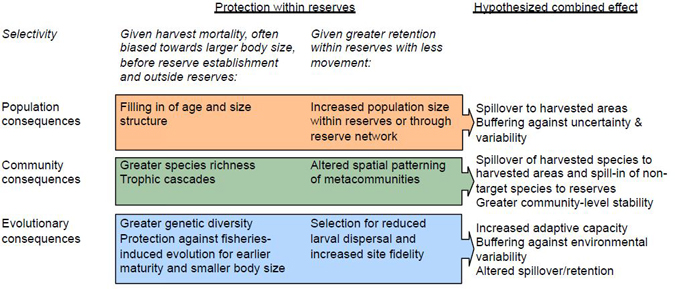
Full text loading...
Here we review the population, community, and evolutionary consequences of marine reserves. Responses at each level depend on the tendency of fisheries to target larger body sizes and the tendency for greater reserve protection with less movement within and across populations. The primary population response to reserves is survival to greater ages and sizes plus increases in the population size for harvested species, with greater response to reserves that are large relative to species' movement rates. The primary community response to reserves is an increase in total biomass and diversity, with the potential for trophic cascades and altered spatial patterning of metacommunities. The primary evolutionary response to reserves is increased genetic diversity, with the theoretical potential for protection against fisheries-induced evolution and selection for reduced movement. The potential for the combined outcome of these responses to buffer marine populations and communities against temporal environmental heterogeneity has preliminary theoretical and empirical support.

Article metrics loading...

Full text loading...
Literature Cited


Data & Media loading...
Supplemental Material
Download Supplemental Figure 1 as a PDF, or see below. Supplemental Figure 1. How the population, community, and evolutionary consequences of marine reserves arise from the selectivity in fisheries and protection, and their combined effect in terms of response to spatial and temporal heterogeneity at each level. Note that the combined effect is often speculative because of the complexity of interactive responses.
